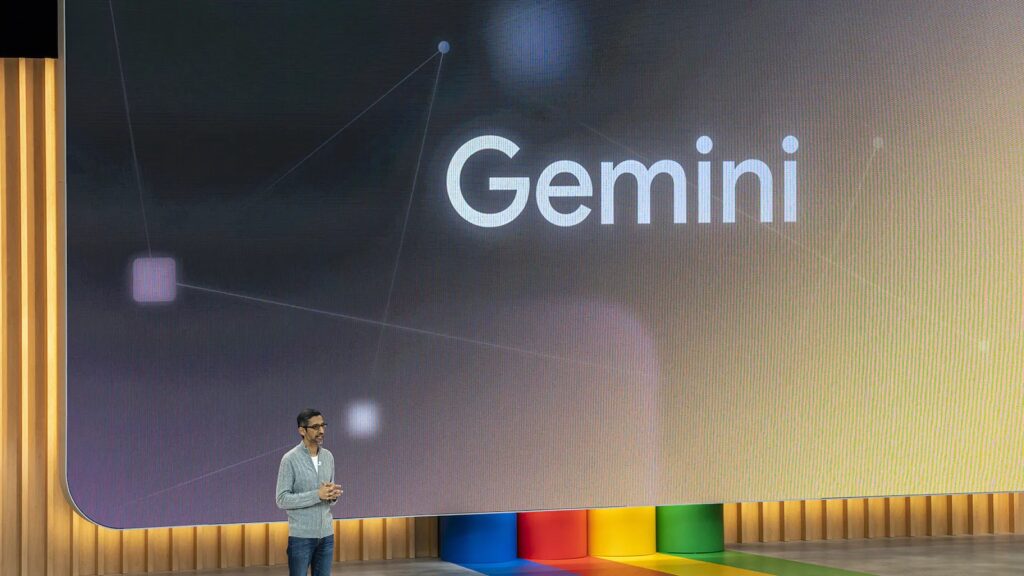
8-17 #Snowflakes :Qualcomm is allegedly going to lower cost focusing on low-end 5G chips; Honor is reportedly working on multiple foldable phones; Honor has teased a return to the Indian smartphone market; etc.

As the recovery of the mobile phone market is not as good as expected, it is believed that to speed up the clearance of inventory, Qualcomm is going to lower cost, mainly focusing on low-end 5G mobile phone chips, with a price reduction of 10%~20%, which is expected to continue until 4Q23. Qualcomm has allegedly only started to cut prices after the accumulation of old products for more than a year. It is rare for this kind of behavior to cut prices less than half a year after the product is launched. Qualcomm’s price cuts undoubtedly reflect the sluggish status quo of the mid-to-low-end 5G smartphone market. Although the downstream inventory level of the consumer electronics market has gradually returned to normal since 1H23, judging from the shipments of mobile phone manufacturers, the overall market to improve remains to be seen. (CN Beta, Yahoo, EET-China, UDN)
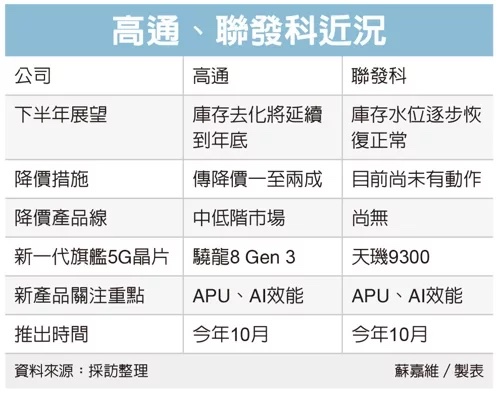
MediaTek has tested out SK Hynix’s LPDDR5T chips with their upcoming processor and confirmed that the new LPDDR5T (Low Power Double Data Rate 5 Turbo) is faster than anything else currently available in the market. The LPDDR5T will have a 9.6Gbps data rate, a 13% increase from the current generation LPDDR5X by Samsung. It operates at ultra-low voltages of 1.01 to 1.12V, which is 10% lower than the previous generation LPDDR5X. This makes LPDDR5T extremely power efficient while still providing fast speeds of up to 9.6 Gbps. It is also available in a variety of storage capacities, up to 16GB. It is speculated that MediaTek has used the Dimensity 9300 SoC to test out the LPDDR5T DRAM from SK Hynix.(GizChina, WCCFtech, Gizmo China)
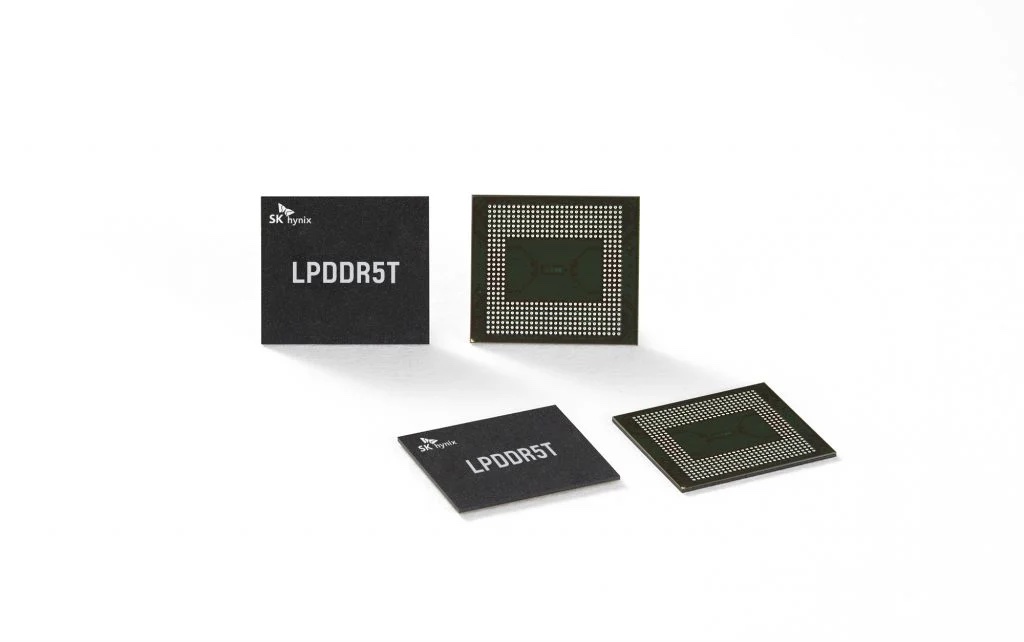
Qualcomm is rumored to exclusively use TSMC’s 4nm N4P process for its upcoming Snapdragon 8 Gen 3, but it may have to change sides for the Snapdragon 8 Gen 4 and switch to Samsung’s foundry for 2024 due to ongoing capacity issues. Apple is reported to have secured the majority of the TSMC’s 3nm wafers, leaving just 15% available for Qualcomm to utilize, which would be unacceptable to the chipset maker. (WCCFTech, SamMobile, Android Headlines, Twitter, Notebook Check)
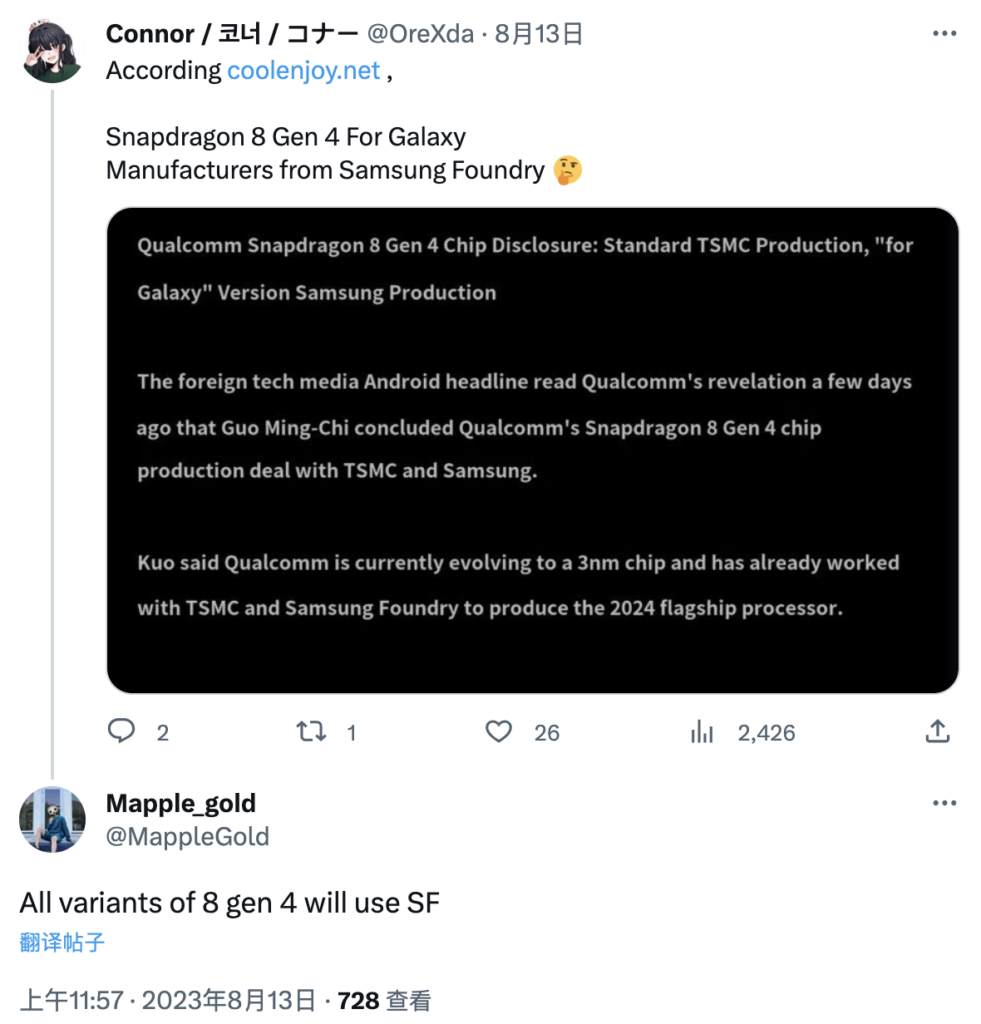
Intel has announced that it has mutually agreed with Tower Semiconductor to terminate its previously disclosed agreement to acquire Tower due to the inability to obtain in a timely manner the regulatory approvals required under the merger agreement, dated 15 Feb 2022. In accordance with the terms of the merger agreement and in connection with its termination, Intel will pay a termination fee of USD353M to Tower. (Engadget, Business Wire, Digitimes)
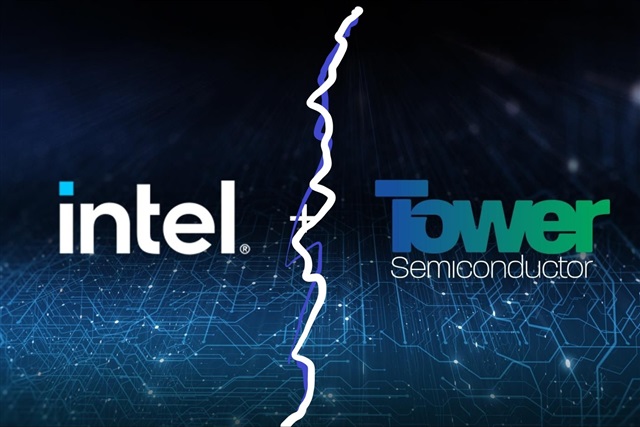
Intel and Synopsys have expanded a partnership to develop a portfolio of intellectual property (IP) for Intel Foundry Services, the company’s contract manufacturing business. This new agreement means Synopsys chip design tools will work with chips being designed for Intel’s advanced process nodes in its foundry factories. The agreement aims to enhance the offering for Intel Foundry Services (IFS) customers by providing access to key IP on Intel 3 and Intel 18A process technologies — some of Intel’s most advanced factory technologies. The partnership supports Intel’s IDM 2.0 strategy, which focuses on fostering a vibrant foundry ecosystem and enabling designers to take full advantage of Intel’s advanced process technologies.(VentureBeat, Intel, EET Asia)
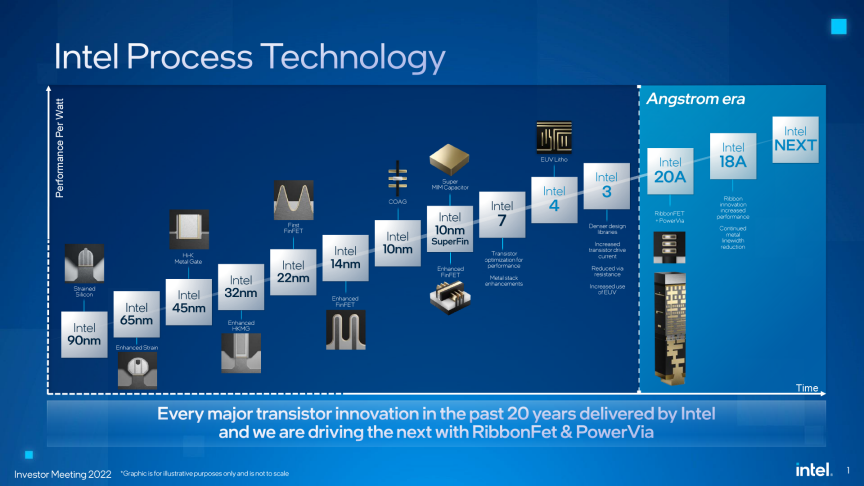

Honor is reportedly working on multiple foldable phones. The company has recently launched the Honor Magic V2 with Qualcomm Snapdragon 8 Gen 2 chip. Later in 2023, it is expected to launch the Magic Flip, which will be Honor’s first vertically foldable smartphone. Honor may also announce as many as 2 more foldable phones, such as the Honor Magic V Slim and the Honor Magic V2 Lite. The Magic V2 has a starting price of CNY8,999 (~USD1,235). There is a possibility that the Magic V2 Lite could be priced at around CNY5,000, making it one of the most affordable horizontally foldable phones in the Chinese market. (Gizmo China, Android Headlines, Sohu, CNMO)
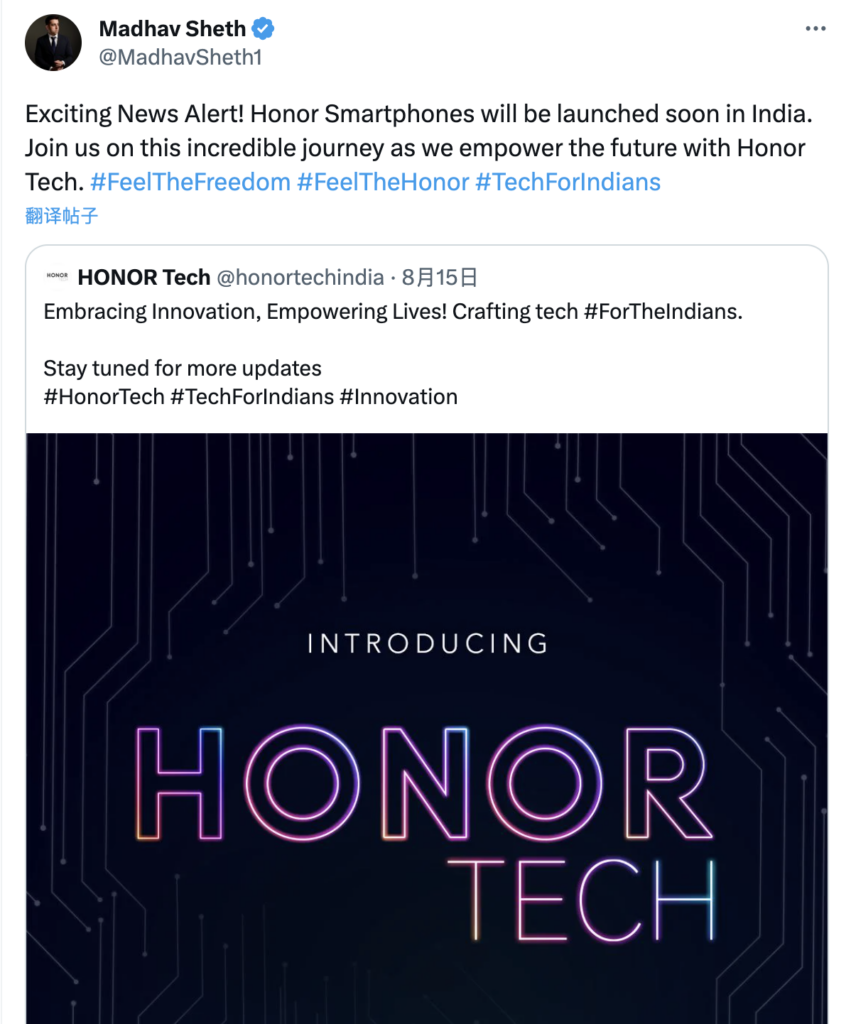

Apple is researching strain gage sensors, likely in an effort to improve the Apple Watch’s strength training capabilities. The job listing from Apple’s Health Technologies team seeks engineers with “exposure to analog electronics, preferably mechatronic systems utilizing actuators, temperature sensors, strain gages, and photodiodes”. Apple is presumably conducting this biomechanics research and development in relation to the Apple Watch. The Apple Watch already contains an actuator, temperature sensor, and photodiodes, but it does not have a strain gage. Strain gages measure variations in electrical resistance when force is applied. They are already widely used in motion-tracking and physiological monitoring systems. (MacRumors, MyHealthyApple, Apple)
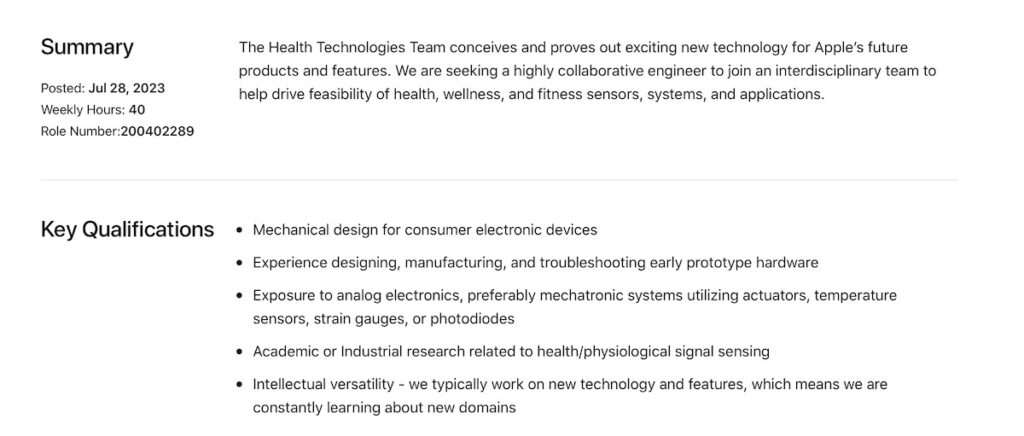

Apple intends to bring the Face ID biometric authentication system introduced with the iPhone, to its Mac range, including both portables and desktops. The granted patent, “Light Recognition Module for Determining a User of a Computing Device”, is concerned with adding Face ID to MacBooks, although instead of those terms, it consistently refers to a light recognition module and a laptop. Apple’s patent application stresses how users are storing sensitive information, and also that the capabilities of a laptop mean people use them to do ever more complex work, which is potentially a problem.(Apple Insider, USPTO)
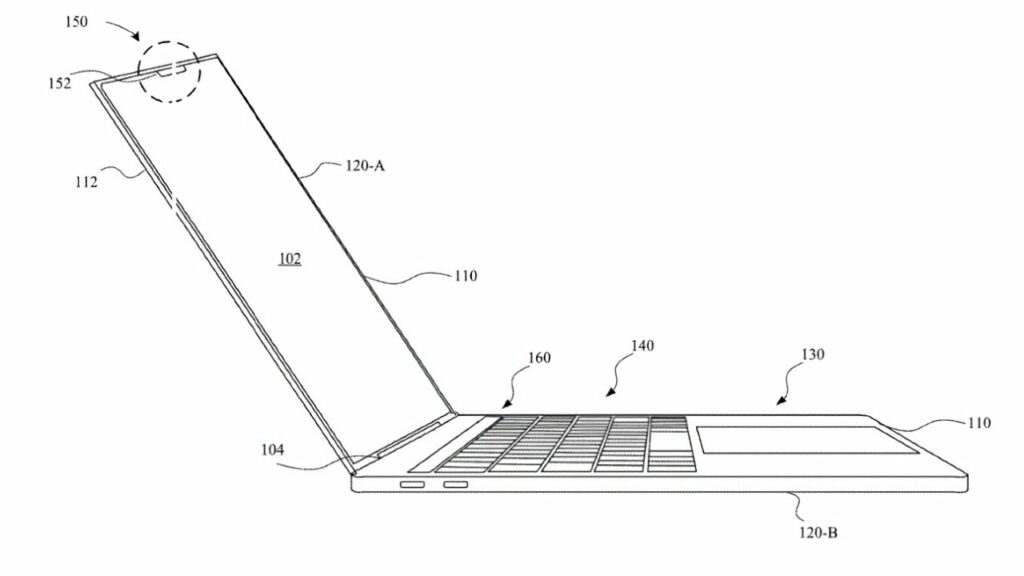

General Motors (GM) is leading a USD60M Series B financing round in Mitra Chem, a Silicon Valley-based, AI-enabled battery materials innovator. The company’s AI-powered platform and advanced research and development facility in Mountain View, California, will help accelerate GM’s commercialization of affordable electric vehicle batteries. GM and Mitra Chem will develop advanced iron-based cathode active materials (CAM), like lithium manganese iron phosphate (LMFP), to power affordable and accessible EV batteries compatible with GM’s EV propulsion architecture, the Ultium Platform. (Engadget, MotorTrend, Reuters, GM, PR Newswire)
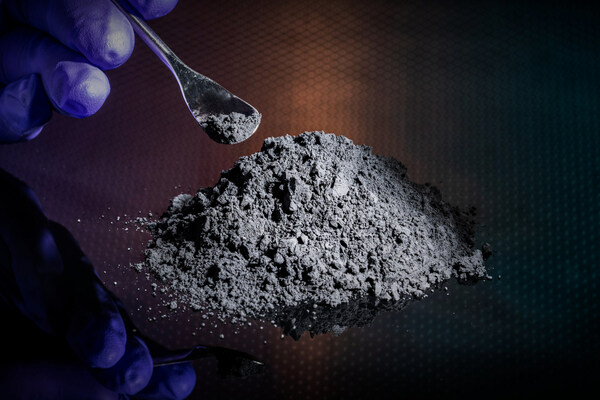
CATL has unveiled the lithium iron phosphate (LFP) battery called Shenxing. It will start mass production by the end of 2023 and be commercially available in 1Q24. Shenxing features a new graphite anode, new electrolyte formulation, thinner and safer separator, and better ion transport. The battery has reduced heat generation and is equipped with a new advanced battery management system (BMS). CATL claims that the Shenxing battery is fit for any vehicle type. The first EV maker to use will be Avatr, a joint venture of CATL and Changan with Huawei’s participation. The LFP battery will enable electric vehicles to range up to 700 km. The full name of the battery is Shenxing Superfast Charging Battery, which can add up to 400km of range in 10 minutes thanks to its ultra-fast charging.(My Drivers, NBD, Sina, Sohu, Electrek, Car News China)
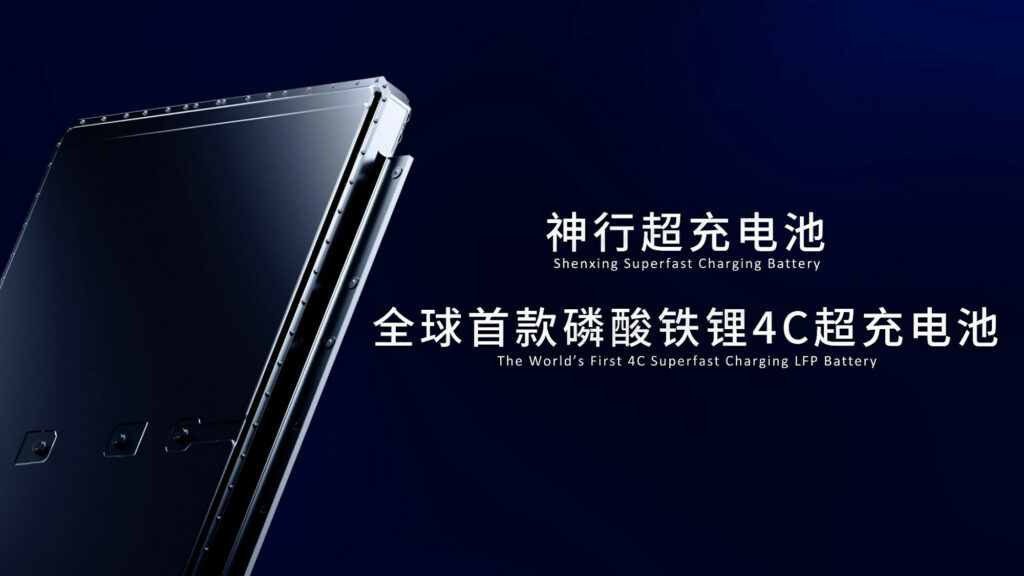

A new type of glass called LionGlass, developed by Penn State researchers, offers the potential to reduce this carbon output by 50%. Soda lime silicate glass, the common glass used in everyday items from windows to glass tableware, is made by melting three primary materials: quartz sand, soda ash, and limestone. Soda ash is sodium carbonate and limestone is calcium carbonate, both of which release carbon dioxide (CO2), a heat-trapping greenhouse gas, as they are melted. With LionGlass, the melting temperatures are lowered by about 300 to 400 degrees Celsius, which leads to a roughly 30% reduction in energy consumption compared to conventional soda lime glass. (SciTechDaily, IT Home, Nature World News)


Android’s Nearby Share using NFCcreates an easy way to share files between devices. Google may soon show Nearby Share “targets” within user’s phone’s share sheet. Currently, in order to use Nearby Share, user will have to select what she wants to send, then locate and tap the Nearby Share button before selecting a recipient. It may not seem like much of a difference, but if user can just share something without needing to wait for Nearby Share to appear, it can really speed up the process. (Android Authority, Twitter, Android Police, Android Central)
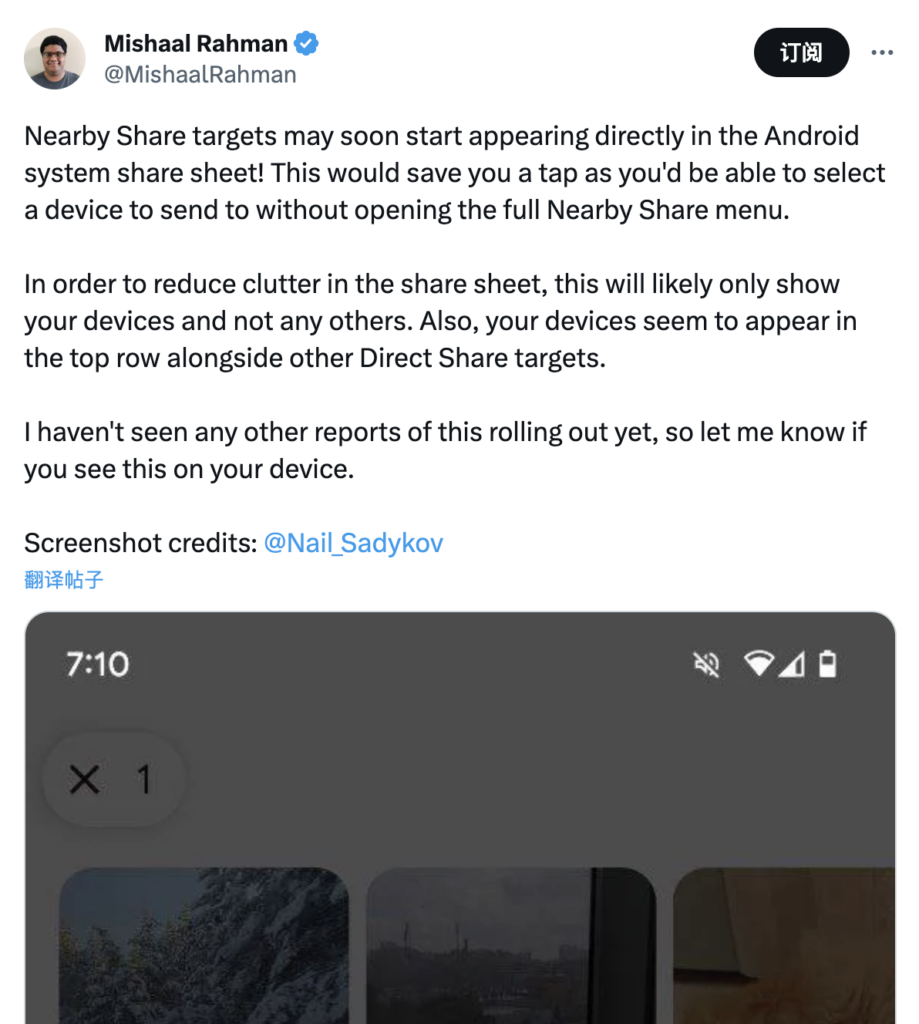
Comcast’s Xfinity Storm-Ready WiFi is a range extender that features a four-hour battery and cellular connectivity that will click on when users lose internet and power. The system is designed specifically to serve as backup for weather-related outages. It is powered by Xfinity’s 10G Network, has WiFi 6 compatibility and works as a WiFi extender during better weather. Comcast notes that in the U.S., power outages average around two hours, and the system offers double that on a charge. Comcast is offering the system through a kind of hardware as a service model, charging users USD7 a month over the course of 36 months.(Comcast, TechCrunch, Engadget, Xfinity)
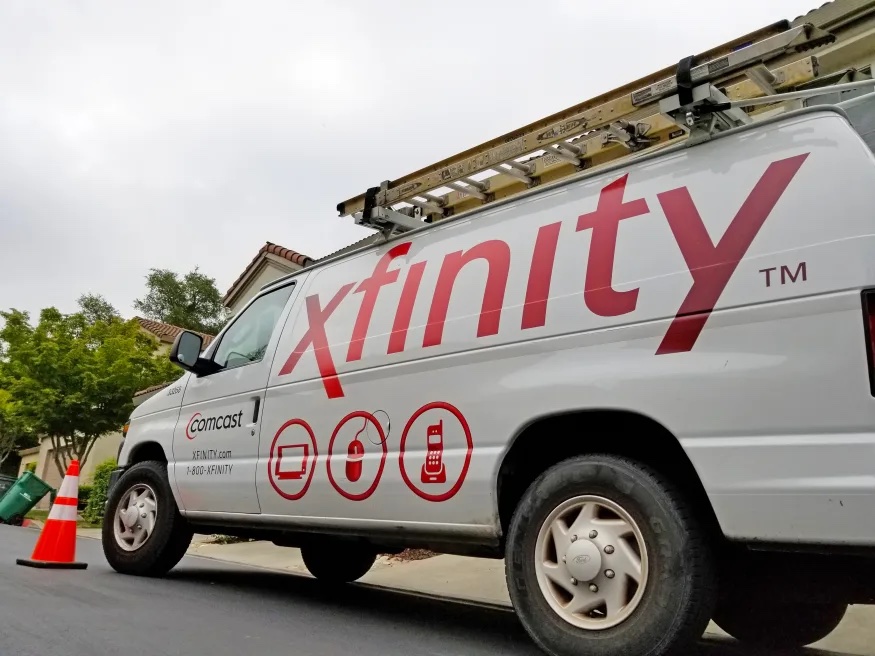

Hon Hai Precision Industry now expects 2023 sales to fall after previously forecasting flat revenue, sounding a warning about demand for the devices it makes for Apple and other global firms. The Taiwanese company now expects most of its main business segments, including smartphones, to contract “slightly” in 2Q23 and over the entire year of 2023, as global economic malaise depresses consumer spending on electronics. It reported a larger-than-expected 30% slide in operating income to NTD30.9B (USD968M) for the Jun quarter.(Gizmo China, Apple Insider, Bloomberg, Caixing Global)
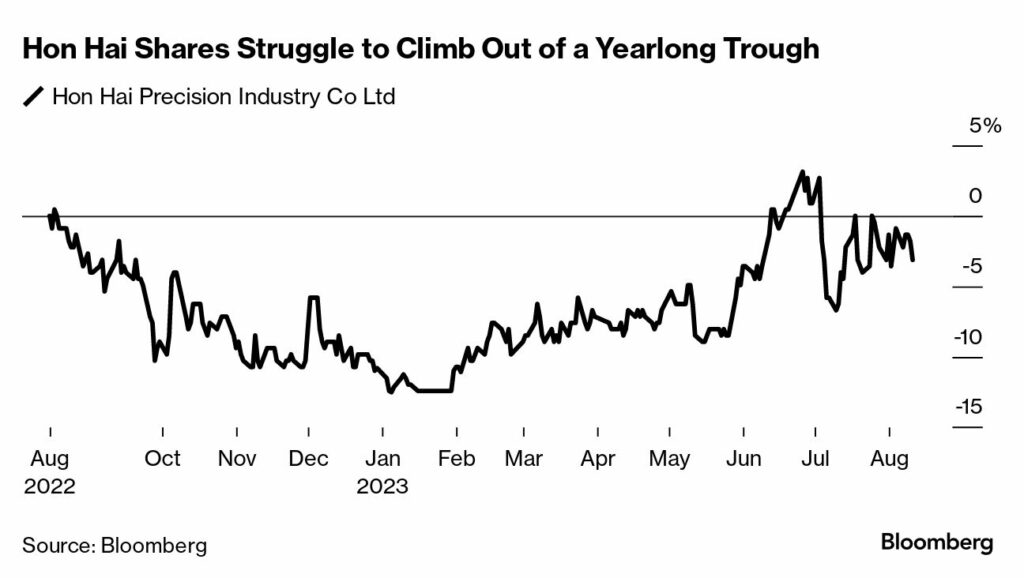
Foxconn Technology Group has started the production of Apple iPhone 15 at its Tamil Nadu plant. A Foxconn plant in Sriperumbudur is preparing to deliver the newest devices only weeks after they start shipping from factories in China. The scale of production of iPhones in India will largely depend on the ready availability of the components that are largely imported. The production lines have been ramped up at the facility in Chennai. Before the iPhone 14, Apple had only a sliver of its iPhone assembly in India, which lagged China output by 6-9 months. That delay was minimised in 2022, and Apple produced 7% of its iPhones in India at the end of Mar 2023. Other Apple suppliers in India — Pegatron and a Wistron factory that is being acquired by the Tata Group — will also soon assemble the iPhone 15. (GSM Arena, India Times, Entrepreneur, Business Today)
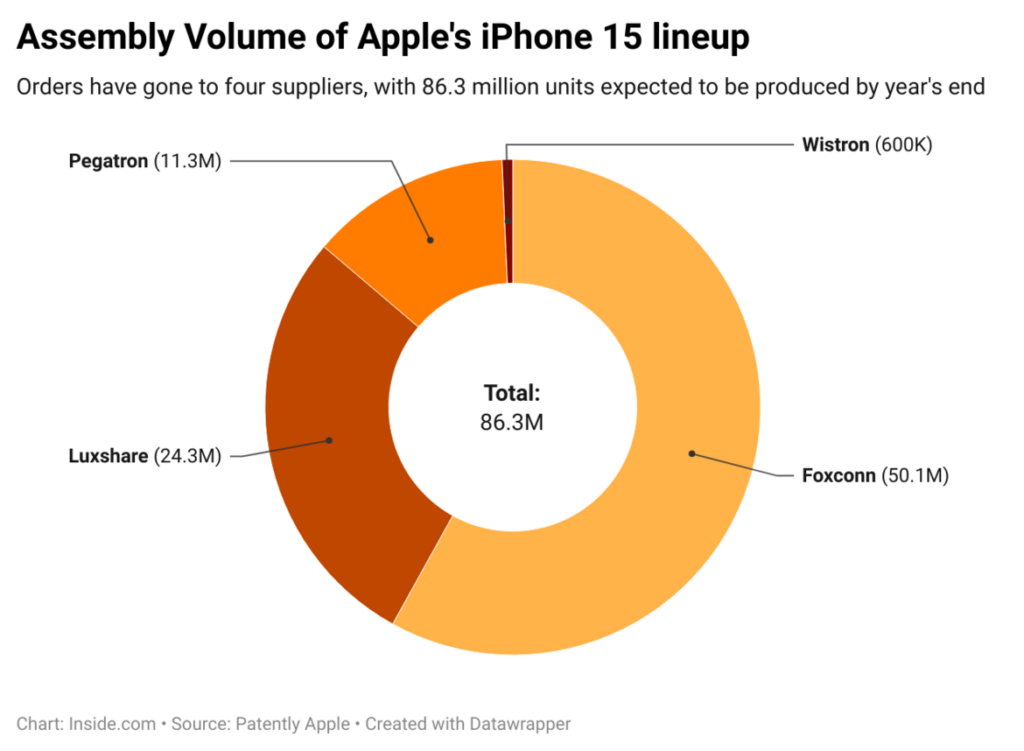
Honor has teased a return to the Indian smartphone market with former realme CEO Madhav Sheth also confirming his presence on board. Now, Honor Tech India has confirmed it is re-entering the Indian smartphone market and will soon announce its first device in the country in over 3 years. Honor withdrew its operation in India back in 2020 just after the brand gained independence from Huawei. PSAV Global has since acted as the official distributor of Honor products in India, releasing wearables, tablets and laptops for the past 3 years. (GSM Arena, Twitter)

‘Made in India’ mobile phone shipments crossed the 2B cumulative units mark under the ‘Make in India’ initiative during 2014-2022, registering a 23% CAGR, according to Counterpoint Research. The huge internal demand, increasing digital literacy and government push are the major reasons for this growth. As a result, India has become the second-biggest mobile phone-producing country. The Indian government has introduced schemes and initiatives such as the Phased Manufacturing Program (PMP), Make in India, Production Linked Incentive (PLI) and Atma-Nirbhar Bharat (Self-Reliant India) to increase local manufacturing and value addition. In 2022, more than 98% of shipments in the overall Indian market were ‘Made in India’, compared to just 19% when the current government took over in 2014. (CN Beta, TechWire Asia, TechCrunch, 9to5Mac, Counterpoint Research)
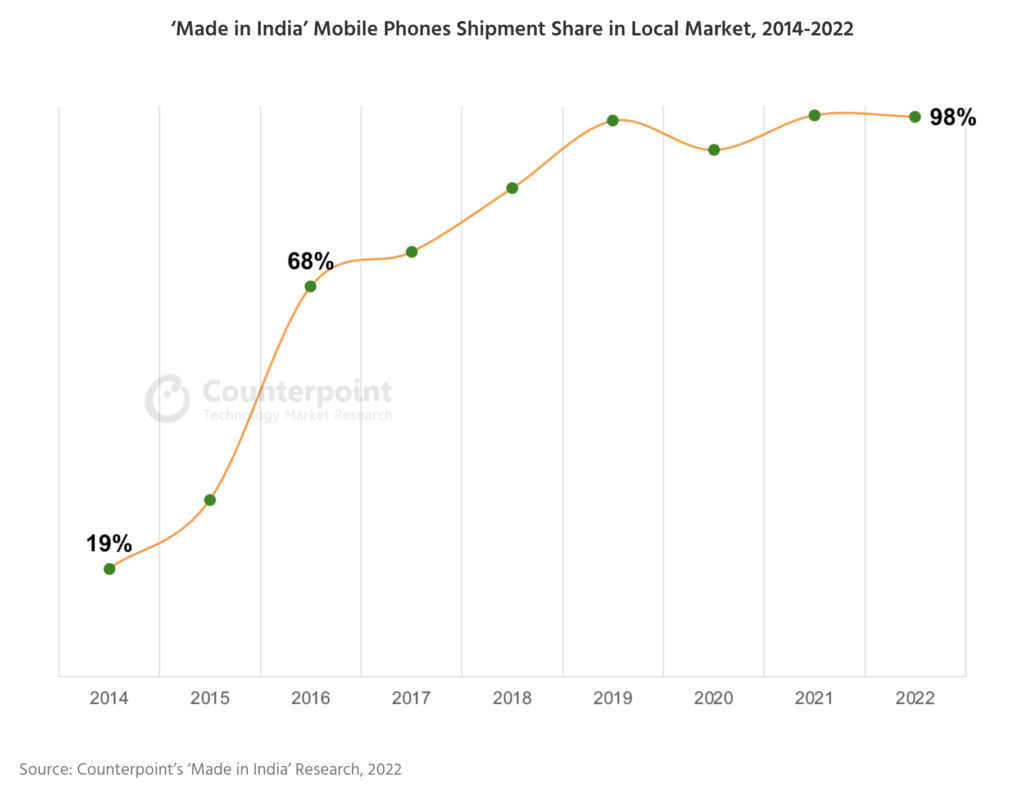

Apple is planning a complete revamp of the Apple Watch for the device’s tenth anniversary, according to Bloomberg’s Mark Gurman. Gurman dubs the overhauled device “Apple Watch X”, similar to the 2017’s iPhone X that celebrated ten years of the iPhone. Apple is apparently working on a thinner casing for the Apple Watch X, as well as different ways for bands to attach to the device. Apple is now considering a magnetic band attachment system, but it is currently unclear whether it will be ready or present on the Apple Watch X. The Apple Watch X could also coincide with Apple’s introduction of microLED display technology. It may also be the first Apple Watch to feature blood pressure monitoring. Gurman added that the Apple Watch Series 9 is due to be only a “minor refresh,” similar to the incremental updates that the device has received in recent years. (Apple Insider, Bloomberg, MacRumors, Yahoo, The Verge)
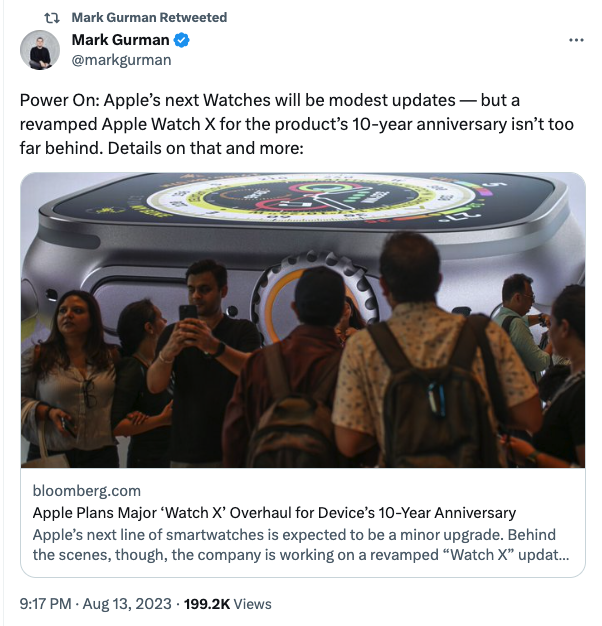

NHL has announced a multi-year agreement with the virtual reality (VR) ice hockey training program, Sense Arena, to launch its first interactive NHL VR platform, NHL Sense Arena. The new virtual reality training platform, available in the fall of 2023, will feature logos and uniforms of all 32 NHL franchises. The new VR program is compatible with the Meta Quest 2 headset and pairs with standard hockey equipment. (VentureBeat, NHL, Sensor Expert)


Earlier 2023, Google finally merged its two AI teams, DeepMind and Brain, to form Google DeepMind. The merged team has been working on a number of AI themed projects, including a high end Gemini large language model that could launch later in 2023. The Gemini will reportedly function as massively powerful word predictors, but also as image generators that can be prompted with plain language. Google’s DeepMind division is internally testing generative AI’s ability to perform “at least” 21 kinds of tasks, which include giving sensitive life advice to users. Google has reportedly contracted with Scale AI, the USD7.3B startup focused on training and validating AI software, to test the tools. (Neowin, Neowin, NYT, CNBC, Mashable, The Information)
